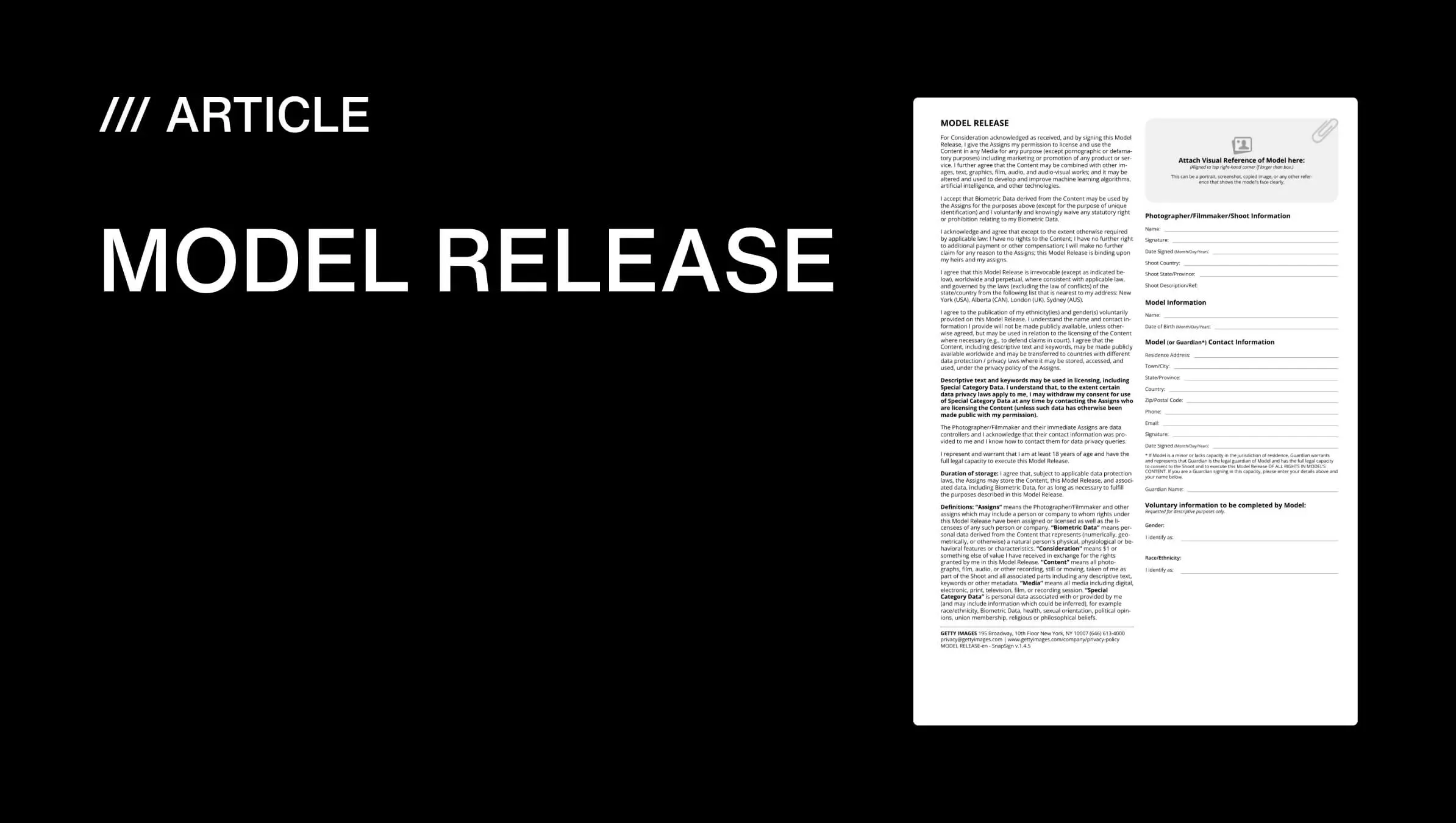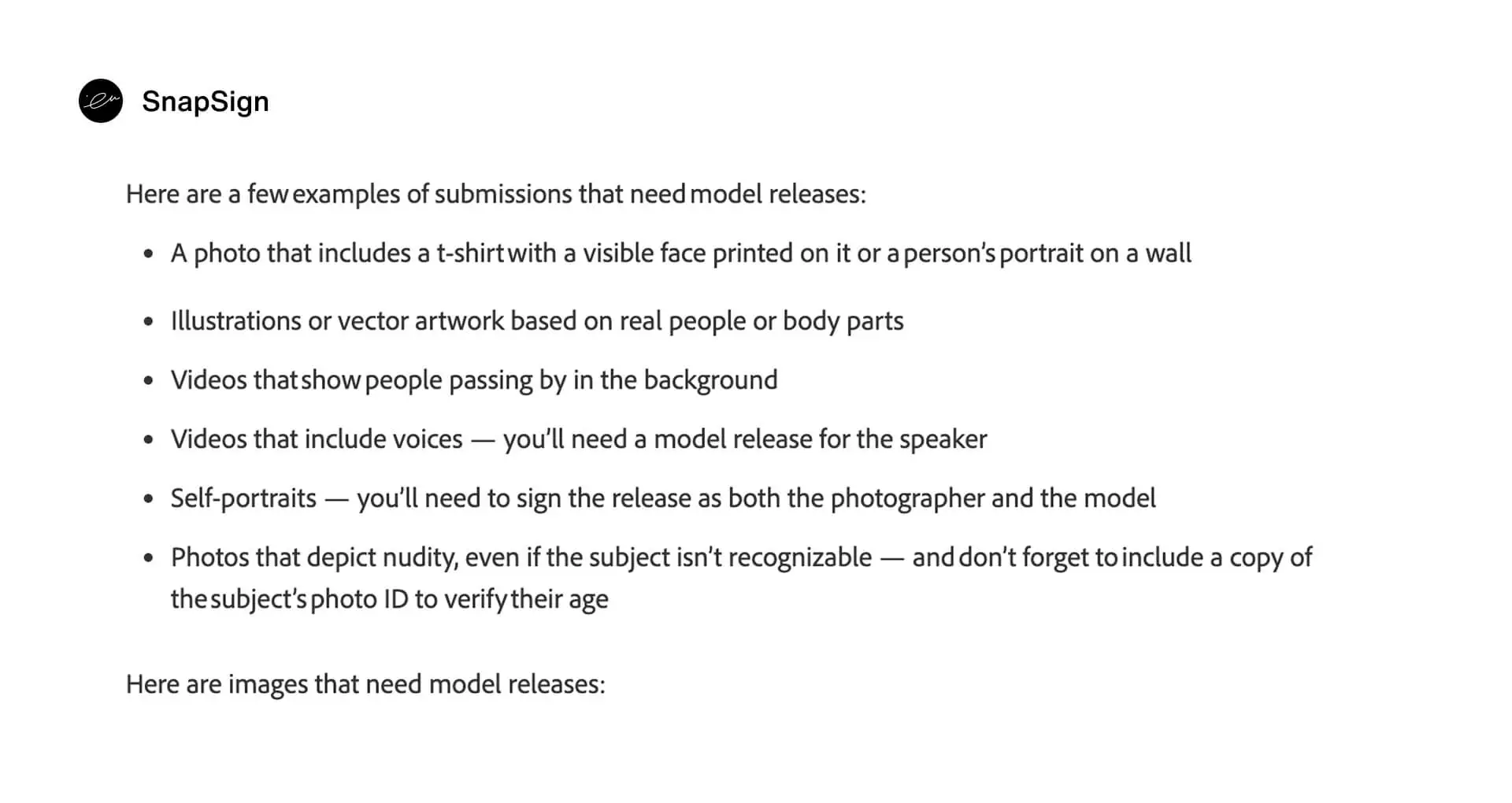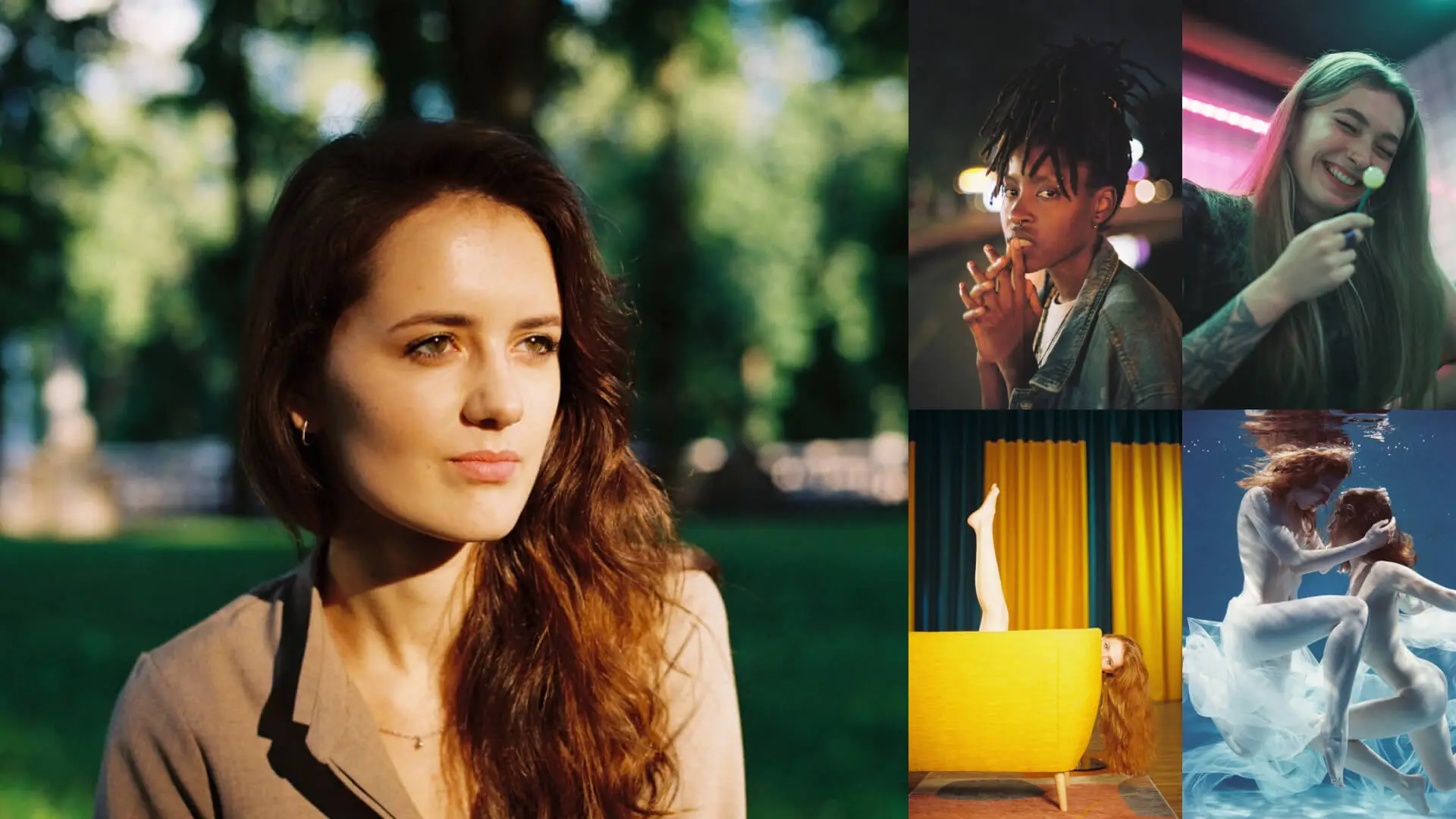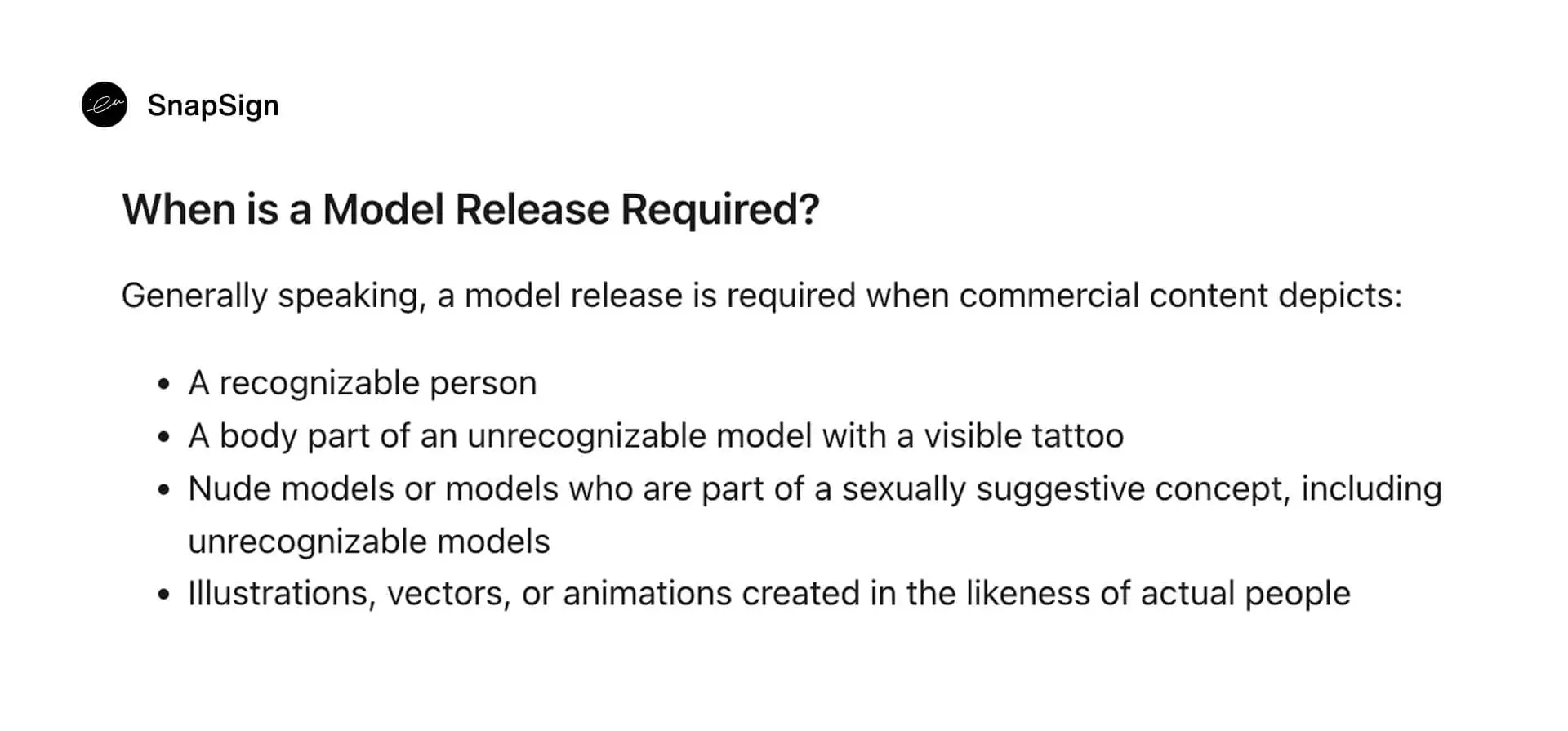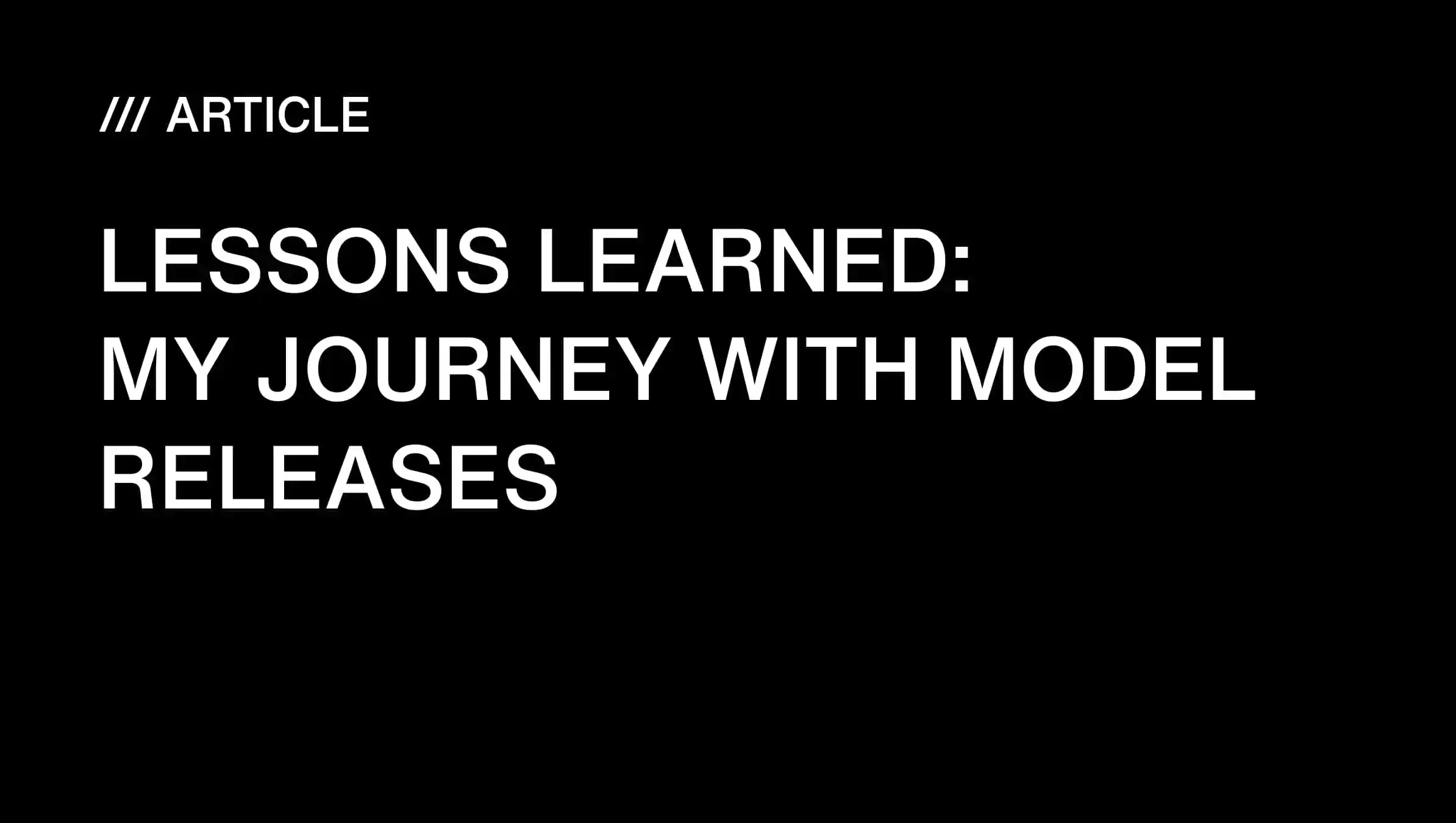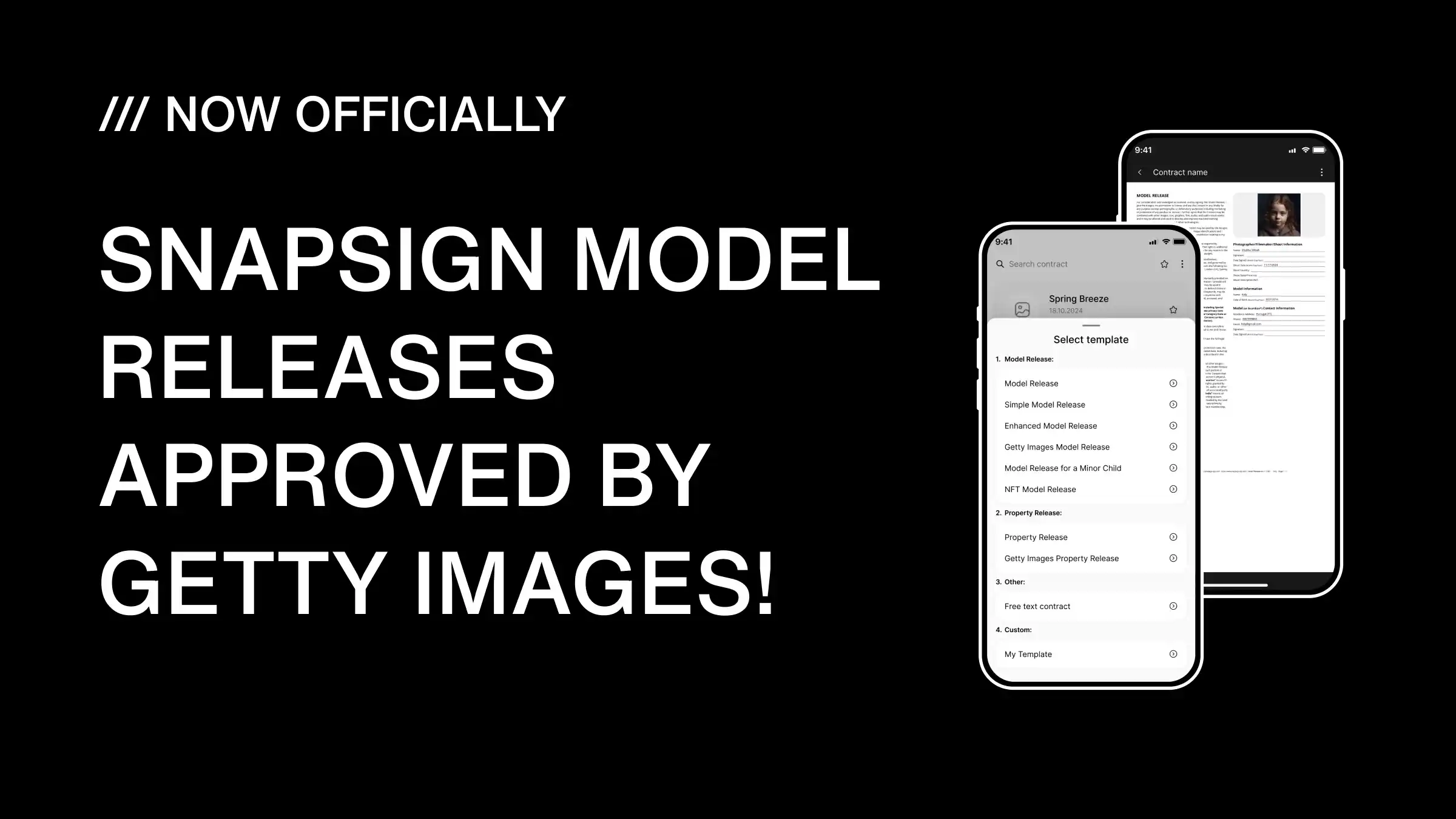Free Model Release Form PDF - Protect Your Photos
Updated: October 15, 2025
Model Release for Photographers and Filmmakers
What begins as a $100 sale can become a $270,000 lawsuit. Ask artist Julia Sinelnikova, who discovered a photograph of herself (taken years earlier) blown up across New York subway ads by the Museum of Sex. She hadn’t signed a thing. The case spiraled into a six-figure lawsuit and months of public scrutiny.
Or ask photographer Joshua Resnick. He did have a model release, but it left too much unsaid. One morning, the images appeared on adult websites without the model’s consent. What he hadn’t prevented beforehand became a half-million-dollar claim against him.
Two photos. Both were undone by missing or misunderstood releases.
Every photographer thinks it won’t happen to them, until it does.
Key Takeaways
- • If a person can be recognized in your photo, you need written consent. That includes faces, tattoos, gestures, and other identifiable details.
- • AI has made verified consent and provenance more valuable than ever. A digital signature is now your proof of authenticity in a world of deepfakes.
- • One global standard matters. The same form can protect you across Shutterstock, Getty Images, Adobe Stock, and other major agencies.
- • Digital release tools like SnapSign simplify compliance. Sign, verify identity, and export your release in minutes—no more paperwork chaos.
What Is a Model Release Form - and Why It Matters Now
A model release form is a legal consent form signed by the person you photograph or film, granting permission to use their likeness for commercial or editorial purposes. In plain terms, it’s your insurance policy and your passport to sell on stock platforms and license images to brands.
Too many photographers still skip this step. Yet nearly every major exhibition and competition (from Canon CEE’s “Beyond the Frame” to PPA’s International Photographic Competition) require them.
In short, if you want your work to stay visible, publishable, and profitable, a proper release is the key that keeps those doors open.
What kind of photo should have a model release?
Why even a shadow can cost you a sale.
Stock agencies like Adobe Stock and Shutterstock apply strict, nearly identical standards. In short, if a person (or even part of a person) can be recognized, you need written consent.
According to Adobe, model releases are required for any image or video that includes:
Shutterstock’s rules echo this. A model release is required whenever content shows the following.
Source: Shutterstock (2025)
In practice, if your photo shows a human presence (a face, a gesture, a mark of identity) protect yourself and your subject.
When in doubt, get the form. You’ll never regret the documentation you have, only the one you skipped.
Free Model Release Templates
You don’t need to start from scratch.
Below are free, multilingual model release templates built to meet Getty Images’ global compliance standards, widely accepted by most major agencies.
For instance, Shutterstock’s 2025 guidelines confirm that most platforms now follow a unified framework for consent.
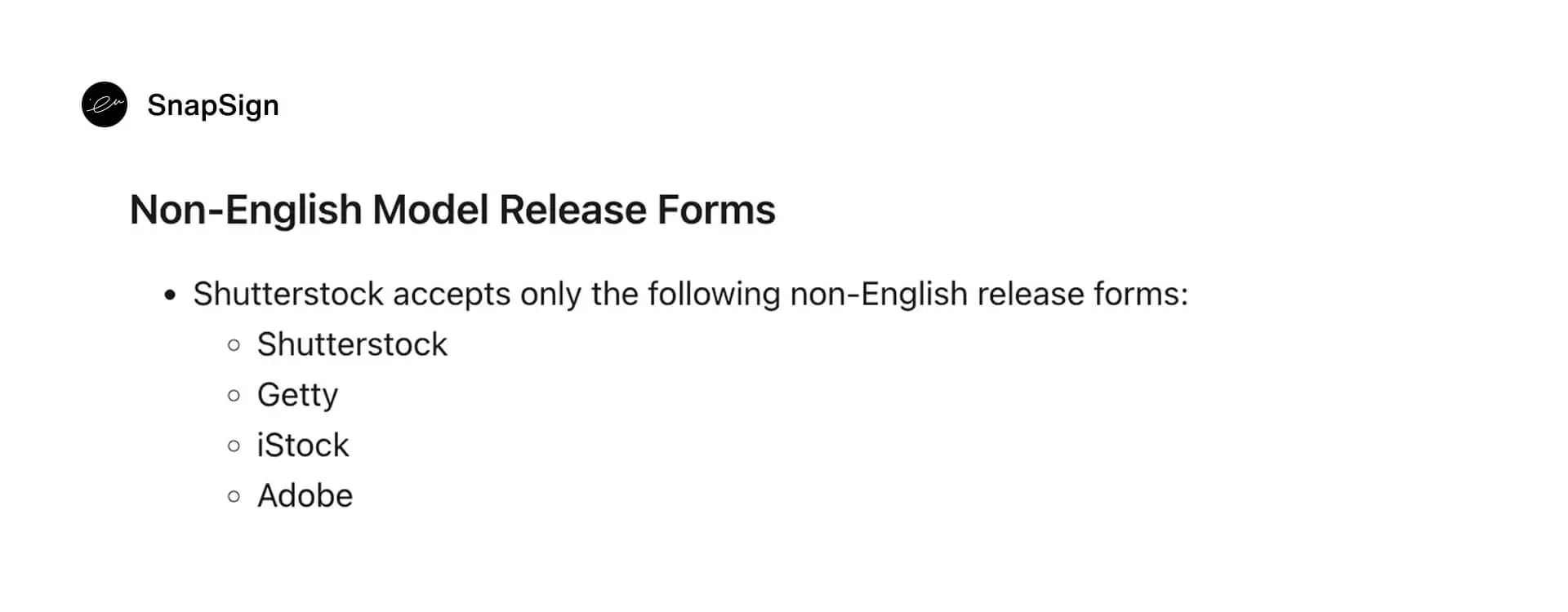
Source: Shutterstock (2025)
This means one reliable template can protect you in most cases.
Note: Country and state laws evolve. For specific shoots, seek local legal advice. Below is a general template - not intended for group sessions, minors, or adult content.
Prefer to customize the document? Edit the digital model release form inside SnapSign. It’s the digital app built for photographers who’d rather shoot than shuffle papers.
Click. Sign. Done: All Digital Model Releases in One App
The idea for SnapSign was born when photographer Pavel Demidovich found himself juggling damp paper contracts on international shoots. Today, SnapSign unifies standards from the U.S. 2257 Act to the EU’s GDPR.
Here’s how it works:
1) Choose a language and template.
2) Add model details and ID verification (for adults or minors).
3) Collect a legally binding e-signature.
4) Export the signed release as a PDF or Word document, ready for any platform submission.
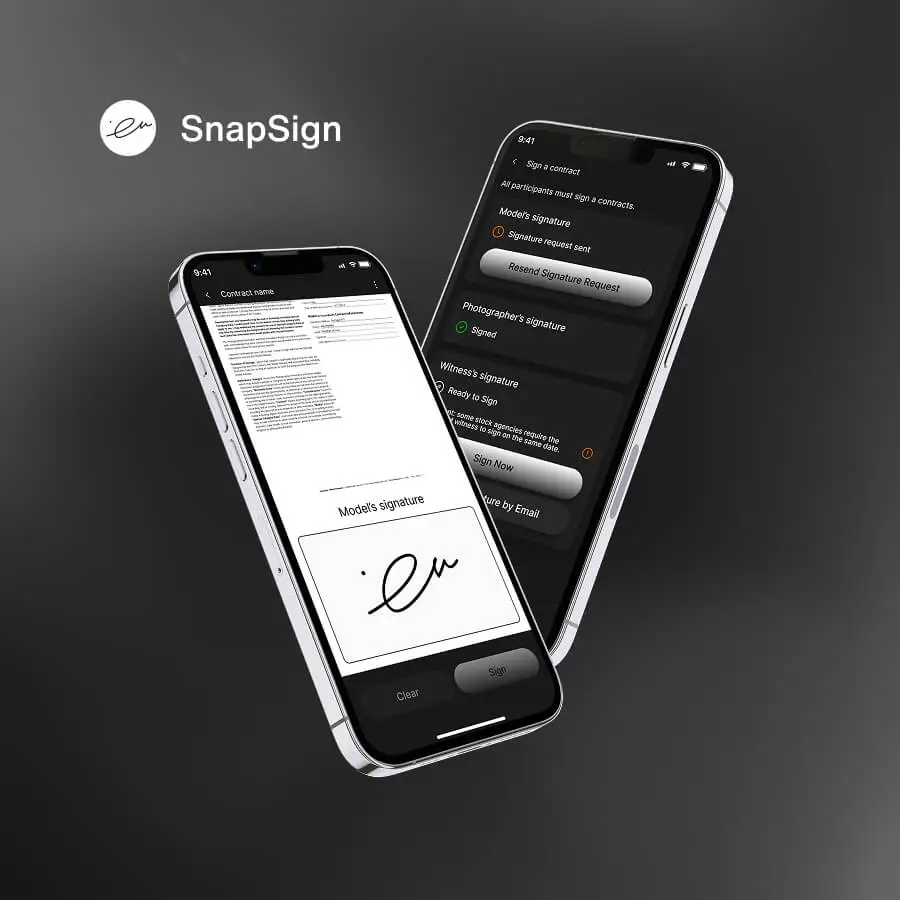
Pavel Demidovich sums it up neatly: “Let photographers focus on creation, not compliance.” Today, more than 20,000 creators use SnapSign to turn legal headaches into two-minute workflows.
The Form That Could Save Your Career
In the age of AI, consent is currency.
AI can replicate faces and mimic styles, but it can’t manufacture permission. That verified signature is your edge.
As Cloudflare and Adobe roll out Content Credentials (C2PA), metadata that records who made an image, where it’s been, and whether AI touched it, the value of verified authorship is rising fast.
Together, releases and provenance tags form a digital fingerprint proving your work is human and legitimate.
And while generic stock drowns in imitation, release-rich collections gain in value.
Protect Your Work Before It’s Tested
In photography, trust is the new competitive edge. Whether you’re shooting for stock, clients, or galleries, airtight releases are the foundation of professional credibility.
From subway ads to AI engines, the future of imagery belongs to those who document consent as carefully as they craft light.
Your art deserves protection, and your subjects deserve respect. With the tools and processes in place, you can focus on capturing humanity, not paperwork.
Start now. Download your free model release form or sign digitally with SnapSign.
Author
Pavel Demidovich
Founder & Creative Director, SnapSign
- Photographer & Filmmaker
- 50+ exhibitions worldwide
- Published in Playboy
- Exhibited in Times Square
📧 Email: pavel.demidovich@snapsign-app.comFrequently asked questions about the model release
In most countries, you’re free to photograph people in public spaces, but using those images commercially is another matter.
A candid of a stranger sipping coffee in Berlin may be art — until a coffee brand licenses it for an ad. Then it’s a lawsuit waiting to happen.
When in doubt, get one. It’s easier to secure a signature than to delete a campaign.
Editorial vs Commercial. A protest photo for a news outlet? Editorial. That same image on a T-shirt? Commercial. Always tell a model how the image will be used before shooting.
Minors. Anyone under 18 needs a parent or guardian’s signature — plus an ID check if uploaded to stock sites.
Crowds. If no one is individually recognizable, a general event release or posted sign may suffice. Otherwise, secure releases from key subjects.
Private Property and Pets. Pets count as property. If you photograph someone’s horse in their stable for a commercial, you need a property release, too.
A model release for video functions identically — just list “audio/visual recordings” in the usage clause.
Only if it specifies that scope. Otherwise, get a new one per project.
Yes. E-signatures from trusted platforms like SnapSign are legally binding under U.S., U.K., EU, and Canadian law.
